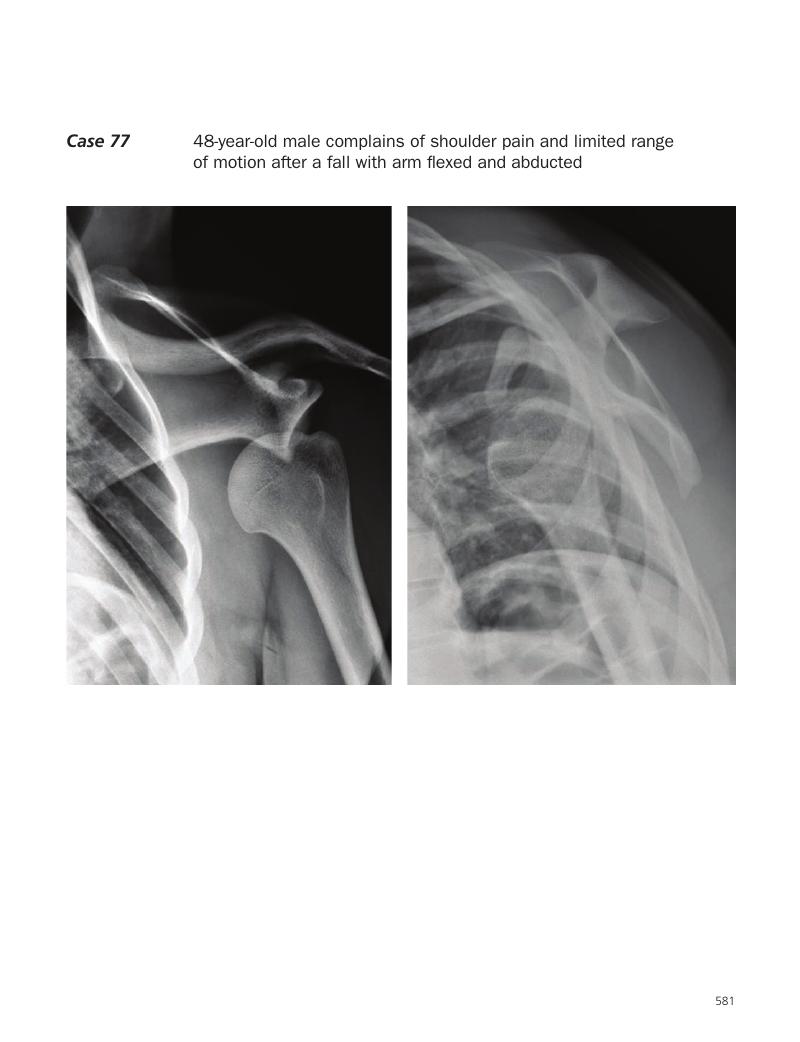Case 77 - 48-year-old male complains of shoulder pain and limited range of motion after a fall with arm flexed and abducted
from Section 9.2 - Upper Extremity Trauma
Published online by Cambridge University Press: 05 April 2016
Summary

- Type
- Chapter
- Information
- Emergency Radiology COFFEE Case BookCase-Oriented Fast Focused Effective Education, pp. 581 - 587Publisher: Cambridge University PressPrint publication year: 2016



